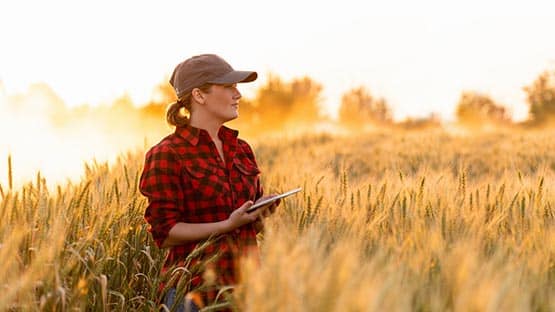
Global agricultural productivity growth is in steep decline and current efforts to expand sustainable agriculture production to feed a swelling global population are inadequate to deal with the challenges that the world faces, according to the 2022 Global Agricultural Productivity Report (GAP Report).
Without swift action and long-term resolve, the systems will remain vulnerable to environmental, economic, and societal shockwaves, the data from the 2022 GAP Report, titled “Troublesome Trends and System Shocks,” show.
The GAP report is produced by the College of Agriculture and Life Sciences at Virginia Tech.
To sustainably produce food and agricultural products for more than 9 billion people in 2050, agricultural productivity must increase an average of 1.73 percent annually. From 2011-2020, global agricultural productivity grew at an average of just 1.12 percent per year, a significant drop from the average growth rate of 1.99 percent from 2001-2010.
Current efforts to accelerate productivity growth are inadequate, the climate is going to have a significant impact on production, and regional inequities around the world exacerbate the problem, the report says.
“When agricultural productivity grows, it means we’re producing more with fewer inputs and resources; this increases agricultural sustainability,” said Tom Thompson, an associate dean and director of global programs in the college. “Data presented in the 2022 GAP Report shows that global agricultural productivity growth has slowed dramatically, and in the world’s poorer countries it is even shrinking. We urgently need to reverse this trend so that we can improve food and nutrition security, sustainability, and resilience.”
Climate change, conflict, and extreme weather events add multiple layers of difficulty and complexity to an already challenging task.
The 2022 GAP Report offers six policy and investment recommendations to increase productivity growth:
- Invest in public agricultural R&D and extension services
- Embrace science- and information-based technologies and practices
- Improve the infrastructure and market access for agricultural inputs and outputs
- Cultivate partnerships for sustainable agriculture and improved nutrition
- Expand and improve regional and global trade
- Reduce post-harvest loss and food waste
The report also includes original Virginia Tech research on the impacts of extreme climate events on agricultural productivity growth.
“This research can help us better predict how future climate changes affect the agricultural sector and the whole economy. Preliminary findings of my research show that extreme climate events on average harm agricultural productivity growth,” said Wei Zhang, an assistant professor of agricultural and applied economics at Virginia Tech.
Agricultural productivity growth supports resilience during system shocks. Productivity-enhancing innovations and services reduce risks for producers and support resilience from weather events, conflicts, and more. This includes drought-tolerant seed varieties, drip irrigation systems, cover crops, improved animal genetics, mobile phone-based extension programs, and access to financial and insurance services.
“We know how to grow agricultural productivity. The most pressing current need is for leaders to enact policies to create an enabling environment for productivity growth. That is why we’re strongly focused on getting the lessons of the GAP Report into the hands of decision- and policymakers around the world,” Thompson said.
The full GAP Report is available online.










